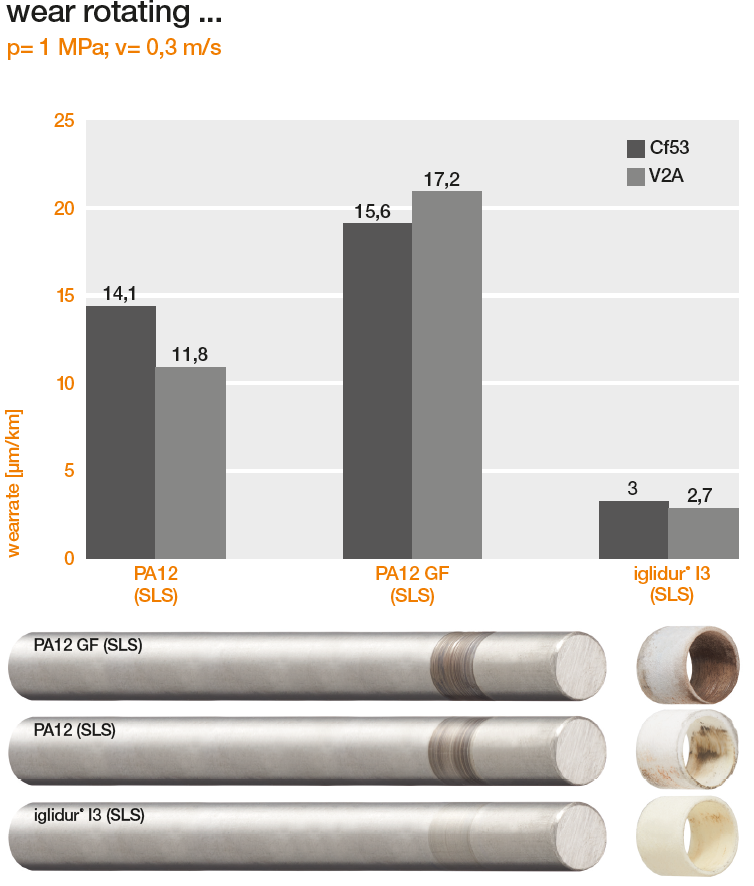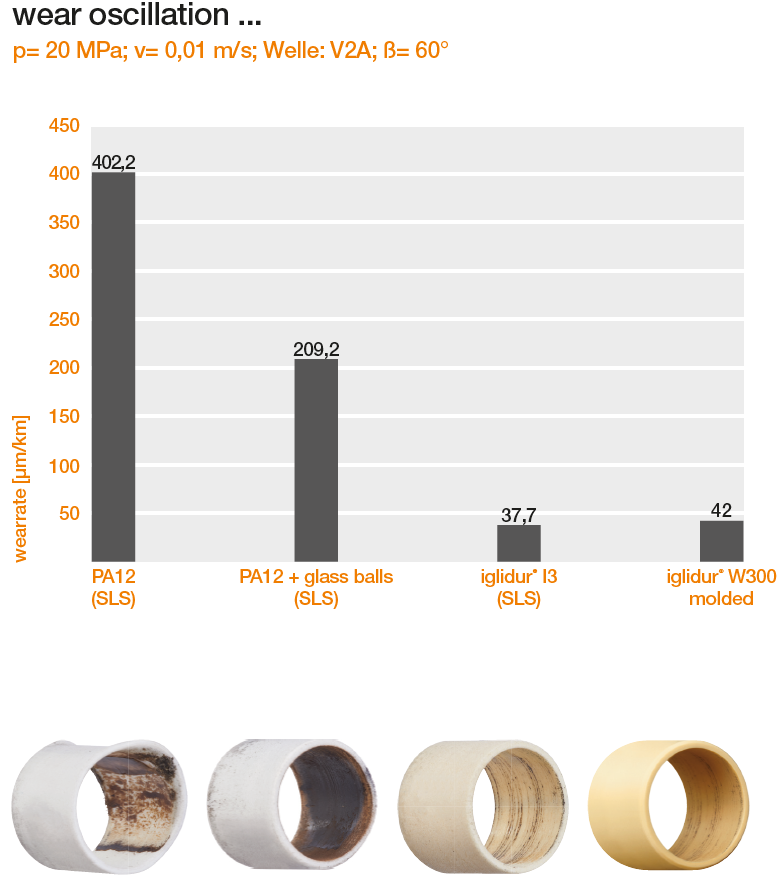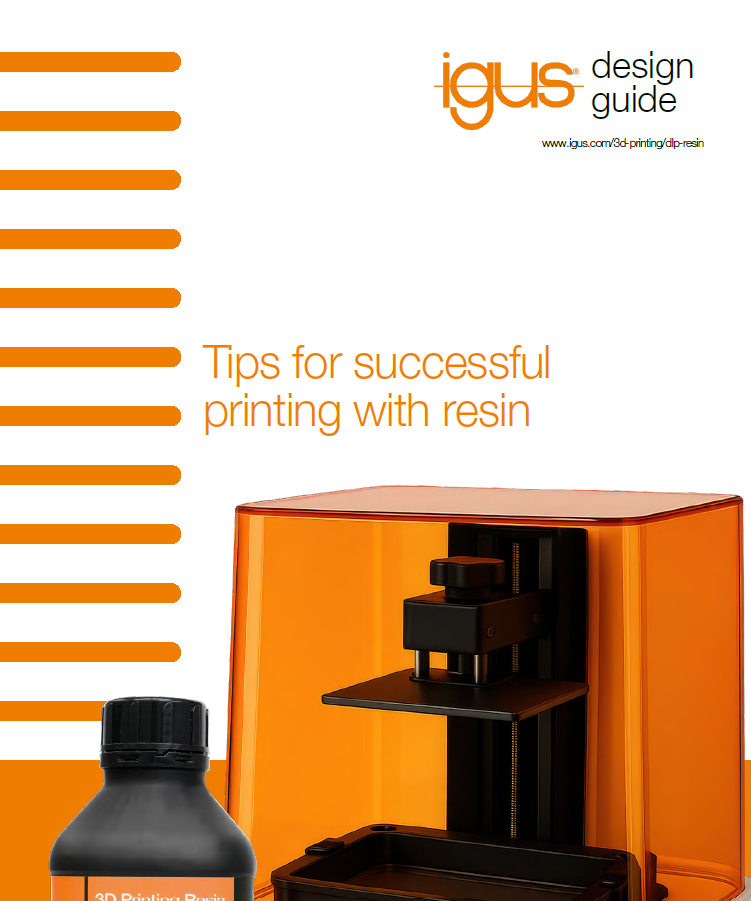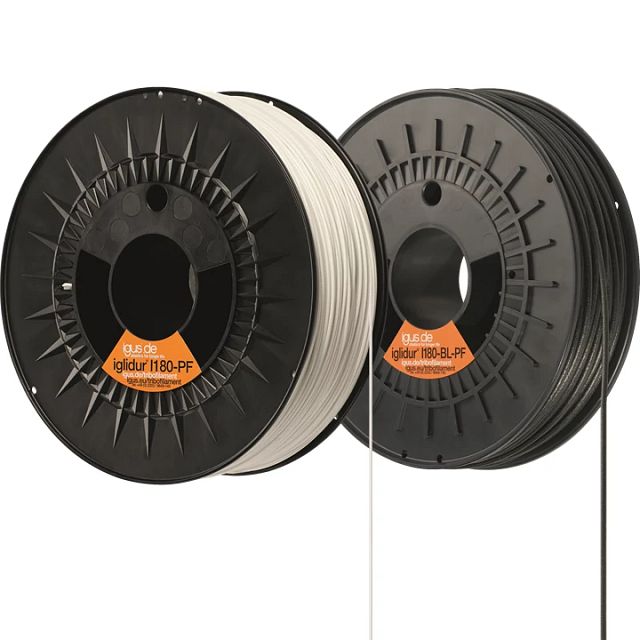3D Printing with Wear-Resistant Plastics
Across industries and materials, 3D printing is increasingly conquering not only product development but also industrial manufacturing processes. However, for additive manufacturing to become another trusted and widespread manufacturing method for industrial use, 3D printing materials must be just as efficient as their mechanically processed counterparts. igus® has dedicated itself to this task in the field of technical high-performance plastics and focuses on the development of filaments and SLS plastics for the construction of low-friction and wear-resistant components for industrial use.
What Does "Wear Resistance" Mean for Mechanical Components?
Wear resistance is the ability of the material to withstand abrasion in a wide variety of stress conditions. For example, consider a plain bearing as a classic case: A shaft rotates or slides in the bearing under a certain load and speed. In this case, wear in the contact surface means an increase in the diameter of the bearing, residues and other undesirable side effects are created, which ultimately lead to failure of the bearing and thus the machine. However, it can also lead to wear on the shaft, which in most cases is more difficult and expensive to repair or replace than the bearing itself.

Accordingly, our material development aims to improve the wear resistance of the material as much as possible. And of course the term “wear” can be extended to other moving applications under similar conditions -- sliders, linear bearings, gear wheels, threaded nuts, thrust washers, grippers and much more.
Why Is Wear Resistance Important for 3D Printing?
Since 3D printing is now not only used for prototype construction and has found its way into industrial manufacturing as a means of manufacturing end-use parts, 3D printing materials must be able to have the same properties as the materials that were previously used for conventional manufacturing technologies. This applies to all material properties—mechanical, thermal, electrical, etc. For our customers -- who have been relying on high-performance polymers from igus® for years—wear resistance and the coefficient of friction are the most important properties, even when choosing a material for 3D printing.
In order to ensure a smooth transition from prototyping to series production, some of the tried and tested technical iglide® plastics are available as 3D printing materials and semi-finished products as well as injection molding. They have similar tribological properties in all of these different forms, which is a great advantage for product development.
Less Wear and Tear on Wear Parts
iglide® materials were originally developed for use as bearings and all types of components that enable low-wear, self-lubricating movement. Accordingly, the iglide® 3D printing materials are typically used for assemblies that are exposed to all kinds of movement (rotating, pivoting, sliding, etc.) but are significantly more durable than other standard construction materials. Judging by the parts ordered daily via our 3D printing service, many customers also benefit from the properties of the igus® materials for the production of custom-made gears. The manufacturing of gears using mechanical processes is significantly more expensive and complicated, depending on size and complexity. Furthermore, our tests have shown that ordinary plastic gears made of POM wear out many times faster than 3D-printed gears made of iglide®.
Cross-Industry Advantages of Wear-Resistant 3D Printing Materials
There are many branches of industry that rely on iglide® materials either to improve a technological aspect of the application (e.g. to reduce maintenance by eliminating the need for regular lubrication) or to reduce the costs for series production (ideally both!). The key industries are the automotive, food and packaging sectors, mechanical and plant engineering, and power generation. But since almost every machine can be improved with wear-resistant components and new materials are regularly developed at igus® for special requirements (ESD, food-compliant, fire-retardant, etc.), more and more industries are discovering the benefits of wear-resistant plastics from additive manufacturing for themselves.
Check, Test, Compare - The Path to Excellent Wear Values
igus® operates a large testing laboratory with special equipment to measure all the promised properties, regardless of whether they are injection molded parts, semi-finished products or 3D printing materials. The wear is checked in long-term tests on special devices in which the above-mentioned load scenarios (pressure, speed, temperature, etc.) are reproduced. In addition, we test the iglide® materials against a large number of different partner materials, i.e. different steel and aluminum types, as well as polymer and ceramic partners.

Wear is measured in µm / km: micrometers of abrasion in relation to kilometers of “walking distance” in the contact area. With this information, customers and our technical representatives can calculate the estimated life of the part in the application. In general, it can be said that the service life is always dependent on application parameters such as material partners (steel, aluminum, other polymers), pressure (force per calculated contact surface), sliding speed (how many meters per second on the sliding surface), type of movement (swivel, rotation, linear) and other conditions such as temperature or ambient media.
No Lubrication? No Problem
The wear of mechanically stressed parts is greatly increased due to the lack of lubrication. Because of this, a metal ball bearing, for example, that can run for miles (figuratively and literally) can quickly fail if the proper lubrication method is not used. So how is it that the self-lubricating 3D printing materials and products from igus® can be used without external lubricants? The incorporation of solid lubricants into the polymer eliminates the need for additional lubrication. This results in a handful of advantages, e.g. less wear and tear, better sliding properties, greatly reduced maintenance requirements, and cleaner machines (no more greasy fingers on machines that users have to interact with).
For a more in-depth look at the wear resistance of our 3D printing materials, check out this white paper, or watch our webinar. You can also try out our online 3D print tool or contact an igus® expert here with any questions.



